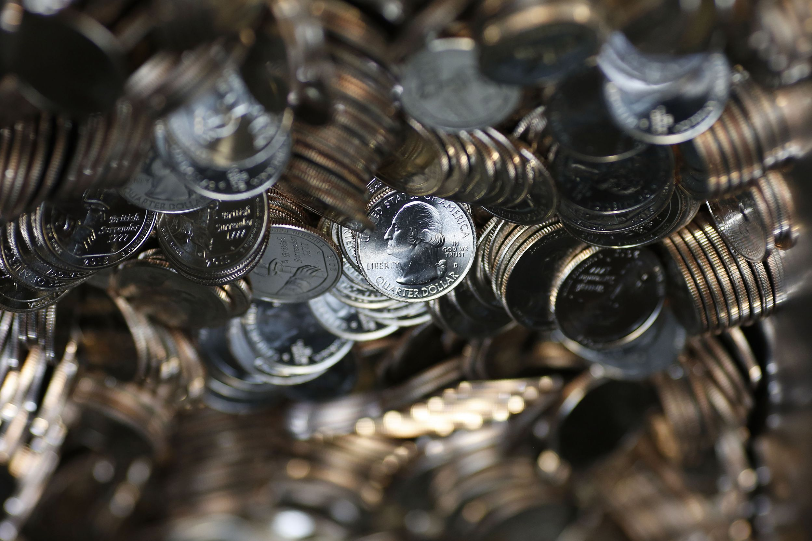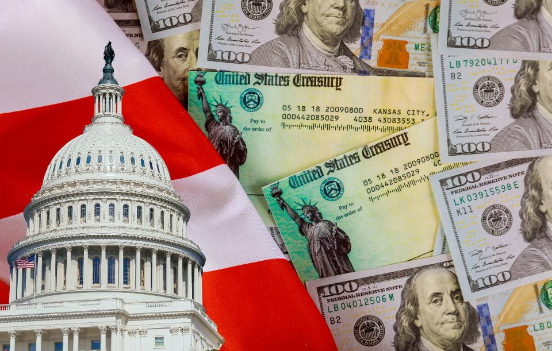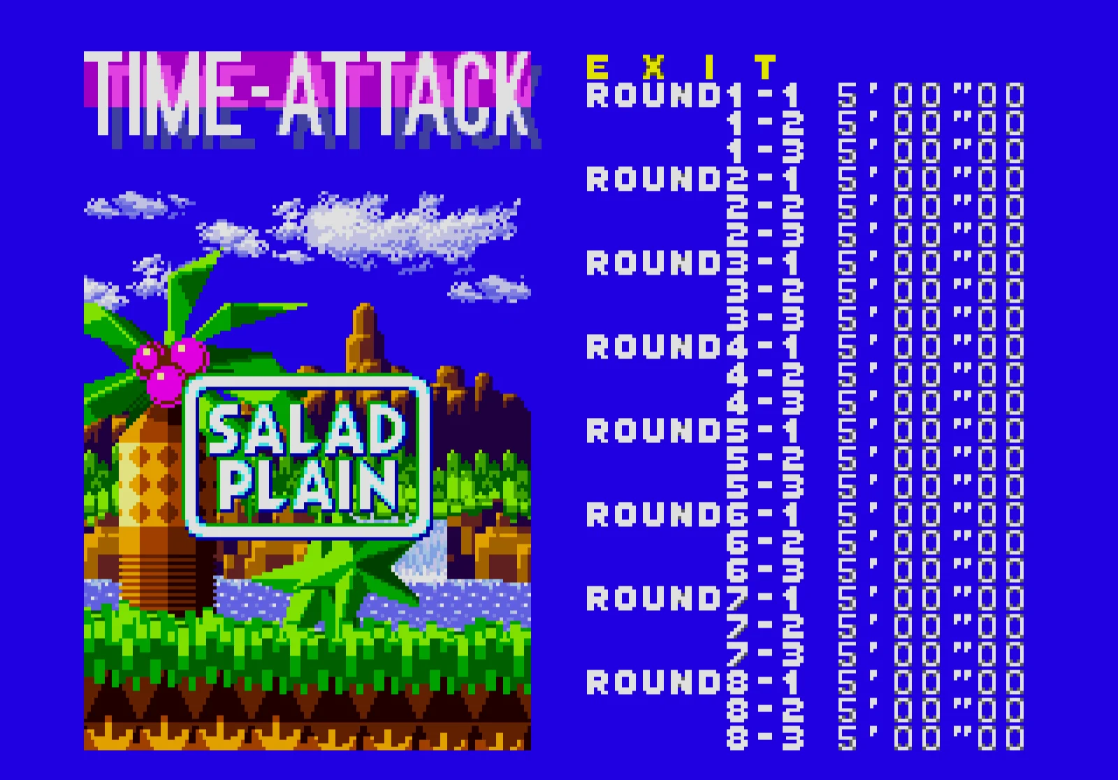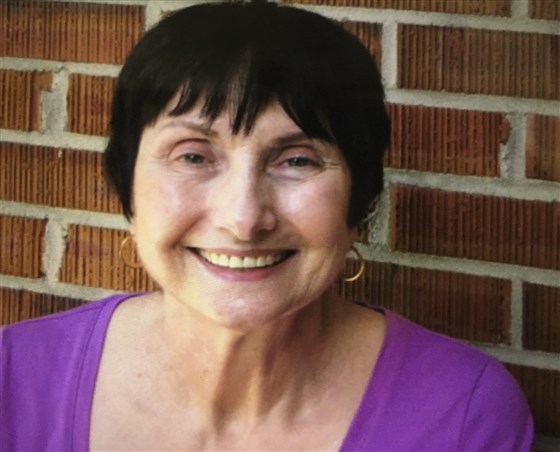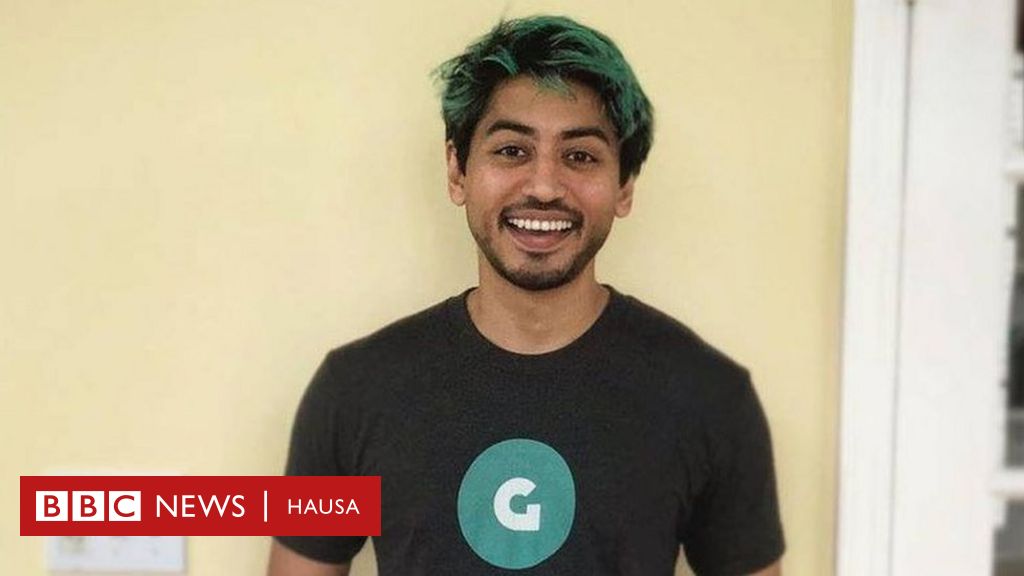Madonna Claims She Was Fined $1 Million For Supporting Russia LGBTQ Rights
Madonna is boasting about not paying a $1 million fine allegedly slapped on her for supporting Russia’s LGBTQ community at a 2012 show in St. Petersburg.
But a Russian court threw out the lawsuit filed by a group of conservative activists, and the singer was never fined a single ruble.
The debacle centers around a show Madonna played on Aug. 9, 2012, in St. Petersburg, during which she voiced her support for the local gay community. At the entrance to the Peterburgsky arena, audience members were handed pink wristbands and asked to wear them during the concert to show “tolerance for the gay community.”
In a tweet and Instagram post on Monday, Madonna linked to a video showing part of her speech that night. “I was fined 1 million dollars by The government for supporting the Gay community,” she wrote. “I never paid.”
In the video she addresses the audience, many of whom were waving rainbow flags.
“I feel that people are becoming more and more afraid of people who are different,” Madonna says on the video. “People are becoming more and more intolerant. It’s a very scary time. But we can make a difference. We can change this. We have the power.”
In the same speech, she told the audience: “I am here to say that the gay community and gay people here and all around the world have the same rights — to be treated with dignity, with respect, with tolerance, with compassion, with love.”
After the 2012 show, a group of conservative activists filed a class-action lawsuit against Madonna, the venue and the promoter, Planeta Plus, demanding 333 million rubles ($10.7 million at the time) in damages, claiming they were insulted by the American singer’s statements and actions in support of the gay community.
But that November, St. Petersburg’s Moskovsky district court threw out the lawsuit, a spokesperson for the court confirmed to Billboard on Wednesday. No fine was ever imposed on the artist, venue or promoter, the spokesperson said.
“There was no gay propaganda during the show,” Yevgeny Filkenshtein, head of PMI Group, which promoted the show, tells Billboard. “Madonna just called on the audiences to be tolerant towards people of other sexual orientation and religious persuasions,” he says. “We protected Madonna from all that in any possible way and dealt with the lawsuit by ourselves. The court eventually sided with us and the artist, and no fine was imposed.”
Several months after the 2012 show, Vitaly Milonov, a conservative St. Petersburg legislator who was behind an anti-gay propaganda law first introduced in the city and then nationwide in Russia, claimed that Madonna had violated Russia’s tax and migration legislation by performing the show on the wrong type of visa and should be punished for that. But he never produced any evidence to back his claims.
Several Russian media outlets have reported on Madonna’s tweet, expressing surprise about the non-existing $1 million fine. Russia has traditionally been hostile towards homosexuality, and intolerance has been on the rise. Same-sex couples are not allowed to marry or form civil unions in Russia.
Madonna did not respond to requests for comment.
She is hardly alone in the music community for her criticism of Russia’s increasingly anti-gay laws. Lady Gaga and Elton John are among the pop stars who have spoken out about local and national laws impacting the LGBTQ community. Citing an administrative law, a St Petersburg court fined the organizers of a 2013 Lady Gaga show for “propaganda of alcohol consumption and homosexuality,” after a 13-year-old girl was exposed to simulated sexual intercourse between women. Russian President Vladimir Putin last year pushed back against John’s criticisms, saying Russia was “very neutral” toward the LGBTQ community.
Article via MSN
HBO documentary ‘Showbiz Kids’ depicts dark side of childhood fame, from abuse to self-doubt
The new documentary “Showbiz Kids” examines the effects of childhood stardom on young celebs.
HBO’s 90-minute film (Tuesday, 9 p.m. EDT/PDT) is directed by Alex Winter, known for his role of Bill in the “Bill & Ted” films. Subjects including Jada Pinkett Smith, “E.T.” star Henry Thomas, actress Evan Rachel Wood (“Westworld”), Todd Bridges of “Diff’rent Strokes” and “Matilda” star Mara Wilson offer their takes on fame at a young age.
Their motives for becoming an actor differ. “Stand By Me” actor Wil Wheaton says he was encouraged by his mother, reasoning “I don’t know a 7-year-old who’s like, ‘What I want to do is go to work!'”
But Bridges remembers he “always wanted to be in show business.”
For some, work nudged out traditional childhood experiences. Wilson says she “never really learned how to ride a bike,” and model/actress Milla Jovovich “hated” her early days in front of the camera. At 11, she was “really a little girl that wanted to play with dolls.”
“Showbiz Kids”, shot over the past two years, also follows two young actors as they chase their dreams of making it big.
Read more highlights on USAToday
Why coins are disappearing from cash registers across the country
At fast-food restaurants, supermarkets, banks and other businesses across the country where cash normally changes hands, customers are being warned that coins are in short supply.
Scott Talan found that out last weekend when he used a Starbucks drive-thru in Virginia and was met by a handwritten sign that read, “Due to the national coin shortage, we can only accept exact change or electronic payment at this time.”
He thought it was a prank.
“I was going to email the store manager or Starbucks headquarters because it didn’t look official,” said Talan, an assistant professor at American University in Washington. “It’s all very strange and fitting of the times we’re in.”
Starbucks did not immediately respond to a request for comment Wednesday.
The apparent absence of enough coins in the nation’s marketplace has so alarmed the federal government that last month the Federal Reserve established a U.S. Coin Task Force to “mitigate the effects of low coin inventories caused by the COVID-19 pandemic.”
The 22 members of the task force were announced Friday, representing government agencies, banks and businesses, and they will meet this month with the goal of sharing recommendations in early August to identify “actionable steps that supply chain participants can take to address the current coin circulation issue.”
Daniel Soques, an assistant professor of economics at the University of North Carolina Wilmington, called the situation a “perfect storm” of circumstances born out of the pandemic, during which businesses that deal heavily in coins, such as laundromats, may have closed, while the fear of getting the coronavirus by touching currency may have spurred people to avoid physical monetary transactions altogether. Coinstar, which operates about 22,000 coin-cashing kiosks nationwide, said volume slowed amid state and city lockdowns. New coin production was also hampered at the U.S. Mint’s production facilities in March and April.
And when the economy started tanking with record losses in the spring, it was enough for some people to “start hoarding coins and hoarding money in general,” Soques said.
Last month, Federal Reserve banks began allocating money from existing coin inventories to banks as a “temporary measure.” As of April, there was nearly $48 billion of coinage in circulation, the Treasury estimated.
The Fed said in a statement that it “is confident that the coin inventory issues will resolve once the economy opens more broadly and the coin supply chain returns to normal circulation patterns,” although it “recognizes that these measures alone will not be enough to resolve near‐term issues.”
Fed Chair Jerome Powell acknowledged at a House Financial Services Committee hearing last month that banks are also suffering through the lack of a “flow of coins.”
“We’re working with the mint to increase supply, and we’re working with the reserve banks to get that supply where it needs to be,” Powell said. “So we think it’s a temporary situation.”
While the Fed has stopped short of labeling it a “coin shortage,” that’s exactly what it is, Soques said.
A dearth of circulating coinage is not unheard of. In 1999, a “penny drought,” presumably caused by people uninterested in using them or stockpiling them in jars, forced some businesses to ask customers for help or to ration the coins.
Today, some businesses are notifying customers that they have no change to give, while others are telling them that they are rounding prices to exact amounts because paper bills are not in short supply. In other cases, businesses are doing only electronic transactions.
But that, too, can be a cause for concern, Soques said.
“While it’s not necessarily a bad thing to move away from physical cash and coins, it will disproportionately hurt the people on the lower end of the financial spectrum,” he said. “They’re the ones who typically don’t have a bank account, so if you move to all-digital, they’re at a disadvantage.”
Article via YahooNews
New Stimulus Package Expected To Be Introduced Next Week
The new stimulus package may be introduced next week and could look like this.
Here’s what you need to know.
New Stimulus
Senate Majority Leader Mitch McConnell (R-KY) is expected to present draft stimulus legislation next week when Congress returns from recess. Senate Republicans, with input from the White House, drafted the stimulus proposal. Since Republicans control only 53 seats in the U.S. Senate, McConnell will need bipartisan support for his stimulus proposal. Given this bipartisan construct, the new stimulus is likely to contain “wish list” items from both Republicans and Democrats, particularly on issues of mutual importance.
New Stimulus: what’s probably included
What’s included in the new stimulus? While there is no guarantee which issues make the final cut, here’s one likely scenario of what gets included in the new stimulus based on bipartisan overlap:
Second stimulus checks
Second stimulus checks or some form of direct payment likely will be included in the next stimulus bill. Members of both parties and the president support second stimulus checks. However, the amount and eligibility criteria are up for debate. How big is the second stimulus check? How many people will qualify for a second stimulus check? There are countless proposals about second stimulus checks, including keeping the same $1,200 one-time stimulus check to $2,000 a month second stimulus checks. If there is a second stimulus check, it won’t be a recurring payment. McConnell also suggested that second stimulus checks may only be available to Americans who earn up to $40,000 a year. However, McConnell has not clarified whether this is the actual eligibility criteria to receive a second stimulus check, or whether it is the criteria to receive the full amount of the second stimulus check. It’s also possible that $40,000 is not the cut off for second stimulus checks. In comparison, to receive the entire first stimulus check of $1,200, a recipient had to have adjusted gross income of up to $75,000. Above $75,000, individual recipients could receive less than $1,200 up to $99,000 of adjusted gross income. It’s also possible that second stimulus checks are less than $1,200.
State and local aid
Both parties in Congress understand that state and local governments have been adversely impacted by the Covid-19 pandemic. Without federal support, some cities and state will face dire financial circumstances, budget cuts and potential bankruptcy. Congress likely will approve state and local aid, although the dollar amounts may differ between parties. State and local aid also will include financial support to schools, colleges and universities to ensure they can open safely this fall (if they open). Republicans want $30 billion to open schools, while Democrats are targeting $430 billion (although these numbers can change).
Smaller unemployment benefits / return-to-work-bonus
Most Democrats want to extend the $600 a week unemployment benefits due to high unemployment and rising Coronavirus case numbers. Many Republicans believe that the $600 a week unemployment benefit is too generous and creates a disincentive for recipients to return to work. While extended unemployment benefits and a return-to-work bonus are functionally different and may create different incentives, they both provide a financial benefit to people who have lost their job or been furloughed. Senate Republicans and the White House have rallied around Sen. Rob Portman (R-OH), who proposed a $450 a week cash return-to-work bonus. If Congress agrees to extend these unemployment benefits, Congress could reduce the amount from $600 to $450 (or a lower amount).
Liability protections for businesses
Liability protection for businesses, hospitals and schools are a must-have provision for McConnell. He has made liability protection a centerpiece of the new stimulus, and wants five-year, retroactive protection from 2019 to 2024.
New Stimulus: what’s probably not included
These issues likely don’t have bipartisan support and, given other financial priorities, may not be included in the next stimulus:
Payroll tax cut
President Donald Trump has championed a payroll tax cut as a pro-growth plan to help stimulate the economy.
Student loan forgiveness
House Democrats passed a weakened student loan forgiveness plan in the Heroes Act that would provide $10,000 of student loan forgiveness only for borrowers who are “struggling financially.” While the Heroes Act provides for an extension of these benefits, Senate Republicans (or Senate Democrats) have not made student loans a top issue of the next stimulus.
Infrastructure plan
Trump and Senate Democrats both agree on the need for a new infrastructure plan. However, given the cost and other financial initiatives, it’s unlikely the new stimulus will include a large-scale, comprehensive infrastructure plan.
$4,000 travel bonus
This proposal would give each individual a $4,000 tax credit to take a vacation at least 50 miles from home.
Final Thoughts
Senate Republicans are targeting the new stimulus closer to $1.3 trillion in total spending. House Democrats proposed $3 trillion for the Heroes Act (which hasn’t passed the Senate). While the numbers likely will change, the final stimulus package could be in the $1.5 – $2.0 trillion range. Congress breaks for summer recess on August 7, which means that the new stimulus could be finalized later this month or in early August.
Article via Forbes
Ice Cube calls Kareem Abdul-Jabbar a Judas for taking ’30 pieces of silver’ after the NBA legend criticized him and Nick Cannon for anti-Semitism which will damage BLM
- Nick Cannon will continue to host Fox’s The Mask Singer, the network confirmed
- Ice Cube slammed Kareem Abdul-Jabbar over his recent column in which the basketball star criticized black celebrities for anti-Semitic tweets
- In a column for The Hollywood Reporter, Jabbar called out the rapper, NFL star DeSean Jackson and NBA player Stephen Jackson for their offensive posts
- Jabbar called the recent wave of public anti-Semitism was ‘a ‘troubling omen’ for the Black Lives Matter movement
- Ice Cube responded in a tweet accusing The Hollywood Reporter of giving Jabbar ’30 pieces of silver to cut us down’
- It came amid as outrage grew over Nick Cannon’s anti-Semitic remarks on his recent podcast that led to his firing from ViacomCBS
Article via DailyMail
Ice Cube has hit back at Kareem Abdul-Jabbar, accusing the NBA star of being a Judas after he criticized the rapper and several other black celebrities for their anti-Semitic tweets that he called a ‘troubling omen’ for the Black Lives Matter movement.
In a scathing column published in The Hollywood Reporter on Tuesday, Jabbar called out Ice Cube, NFL star DeSean Jackson and fellow NBA player Stephen Jackson for recent social media posts containing anti-Semitic messages, some of which promoted the controversial views of Nation of Islam leader Louis Farrakhan.
Jabbar referred to a series of tweets by Ice Cube last month that contained ‘creepy symbols and images’ implying Jews were responsible for the oppression of blacks.
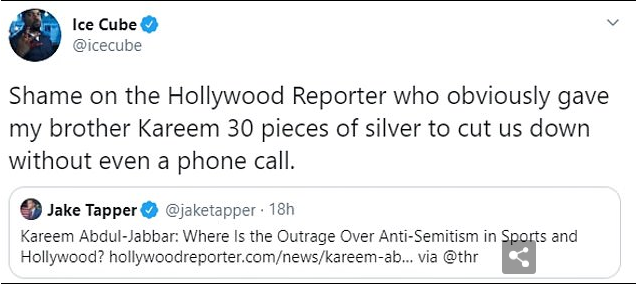
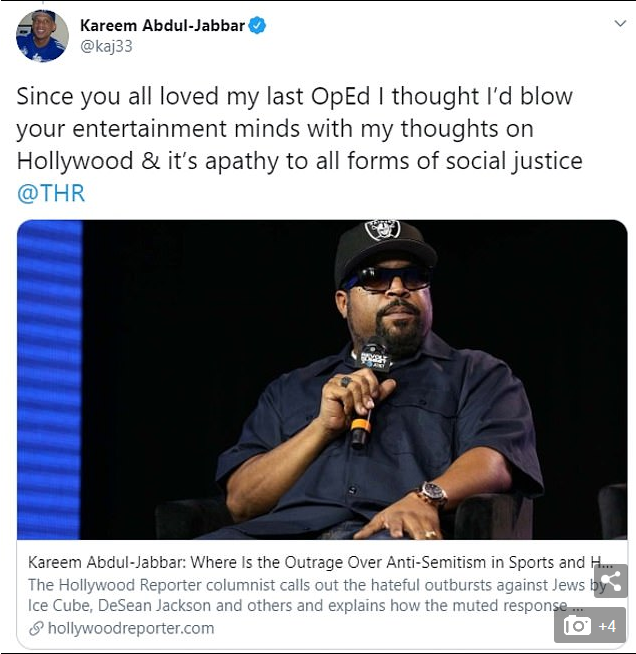
Philadelphia Eagles wide receiver DeSean Jackson also drew backlash earlier this month for sharing quotes attributed to Adolph Hitler and voicing support for Farrakhan.
Jabbar criticized the ‘lack of massive indignation’ over the posts, saying he was shocked to see little public outrage despite the ‘new Woke-fulness in Hollywood.’
‘It’s so disheartening to see people from groups that have been violently marginalized do the same thing to others without realizing that perpetuating this kind of bad logic is what perpetuates racism,’ Jabbar wrote.
Ice Cube later fired back at Jabbar accusing him of selling out to write the take-down piece.
‘Shame on the Hollywood Reporter who obviously gave my brother Kareem 30 pieces of silver to cut us down without even a phone call,’ he tweeted on Wednesday.
The phrase is in reference to the biblical story of Judas who was given 30 pieces of silver to betray Jesus.
Jabbar is yet to publicly respond to Ice Cube’s comments.
The athlete’s column was published as backlash grew over an episode of Nick Cannon podcast in which the actor made anti-Semitic remarks and called white people ‘barbaric’, ‘evil’ and ‘savages’.
Cannon was fired by ViacomCBS on Tuesday for promoting ‘hateful speech’ in the widely circulated episode where he spread anti-Semitic conspiracy theories claiming black people were robbed of their birthright by Jews.
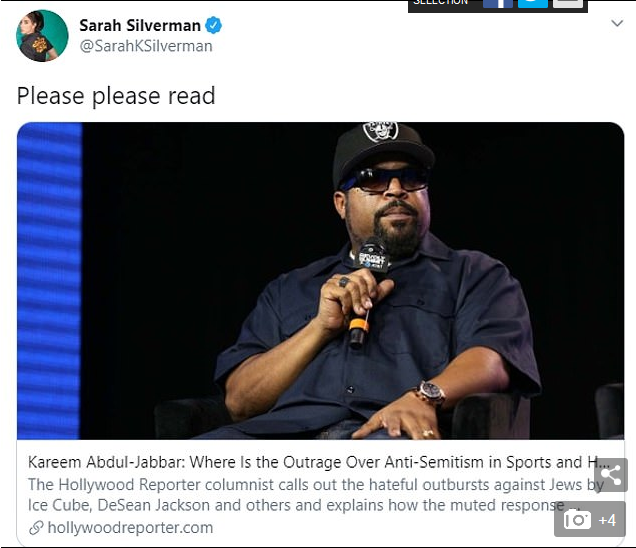
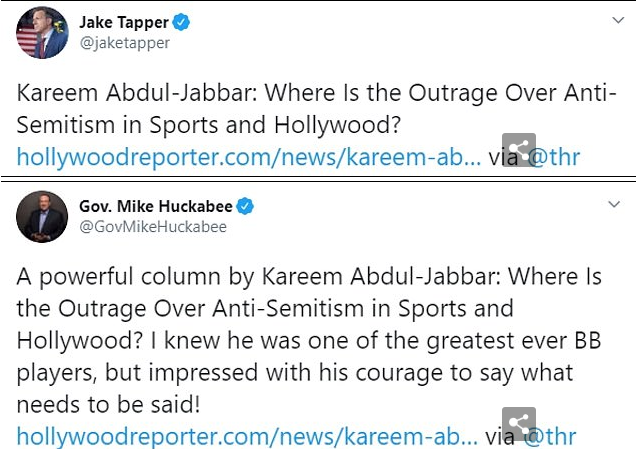
The actor drew further backlash on Wednesday after he refused to say he was sorry and issued a statement accusing the media giant of being on the wrong side of history.
Jabbar did not mention Cannon in his piece but criticized Ice Cube and others of continuing ‘to defiantly marinate in their own prejudice’ even after they are called out.
‘Their arrogant and irrational response to accusations of anti-Semitism, rather than dissuade us, actually confirmed people’s worst opinions,’ Jabbar wrote.
‘Ice Cube’s response was remorseless: ‘What if I was just pro-Black? This is the truth brother. I didn’t lie on anyone. I didn’t say I was anti anybody. DONT BELIEVE THE HYPE. I’ve been telling my truth.”
Jabbar’s column was praised by a number of Jewish celebrities including Sarah Silverman and CNN presenter Jake Tapper.
Check out some Lovelyti videos:
Ice Cube Says He Feels “No Emotions” About Jerry Heller passing
Ice Cube & Whoopi Goldberg weigh in on Kendrick Lamar’s concert debacle
Ice Cube CONFRONTS Bill Maher~The N-Word is OURS! you can’t have it back!
Starbucks customer who wouldn’t wear mask wants half of $100K donated to San Diego barista
A woman says she is entitled to half of the $100,000 donated to a Starbucks barista in San Diego who refused to serve her because she wasn’t wearing a mask.
A woman says she is entitled to half of the $100,000 donated to a Starbucks barista in San Diego who refused to serve her because she wasn’t wearing a mask.
In June, Amber Lynn Gilles posted a picture of the barista, Lenin Gutierrez, on Facebook and accused him of discrimination for not wearing a mask.
Gilles claims to have a medical exemption.
“Meet lenen from Starbucks who refused to serve me cause I’m not wearing a mask. Next time I will wait for cops and bring a medical exemption,” Gilles’ post read.
An Orange County man saw the post, felt bad for Lenin and set up a GoFundMe page for him.
The page ended up generating more than $100,000 in donations.
Now, according to ABC7’s sister station in San Diego, the woman who made the original negative post claims she is entitled to half the money.
She has started her own GoFundMe page to raise money for a lawyer to try and get it.
Article via ABC7
7 Sonic the Hedgehog Prototypes
Article via Kotaku
Few things make me happier than hearing that a generous soul, upon discovering a prototype or unreleased game, has decided to take it upon themselves to get that game off of its ROM cartridge and make it available to the world.
It’s one thing to read anecdotes from the developers and look at early concept art for lost and early versions of games, but it’s another thing altogether to get to play these lost artifacts. You get to experience for yourself how a game evolved over the course of its development, giving you a deeper understanding of how the finished product became what it is.
The most treasured prototypes are, as you might expect, games from series with fame and/or notoriety: Pokémon, Resident Evil, and The Legend of Zelda are all high-profile series that have had early, sometimes wildly different, prototypes found and preserved for all to study and enjoy. But few well-loved series have had their development history as well-chronicled through prototypes as Sega’s Sonic the Hedgehog. Many Sonic games for the Genesis console family have prototypes that ended up becoming publicly available, all of which give us candid looks at the games in the middle of their development.
One wonders if Sega in the 1990s was just an exceptionally leaky company, because there are quite a few classic Sonic prototypes floating about. Many of them are simply incremental builds of the same game, each one featuring a little tweak to a stage design, maybe a handful of edits to the sprites. But several of the early builds that have been found are far more interesting: featuring cut stages, discarded gameplay elements, placeholder graphics, and wildly different soundtracks. Taken together, they paint a vivid picture of how these games were made: what the developers prioritized, what didn’t work, what needed to get the axe, what could have been.
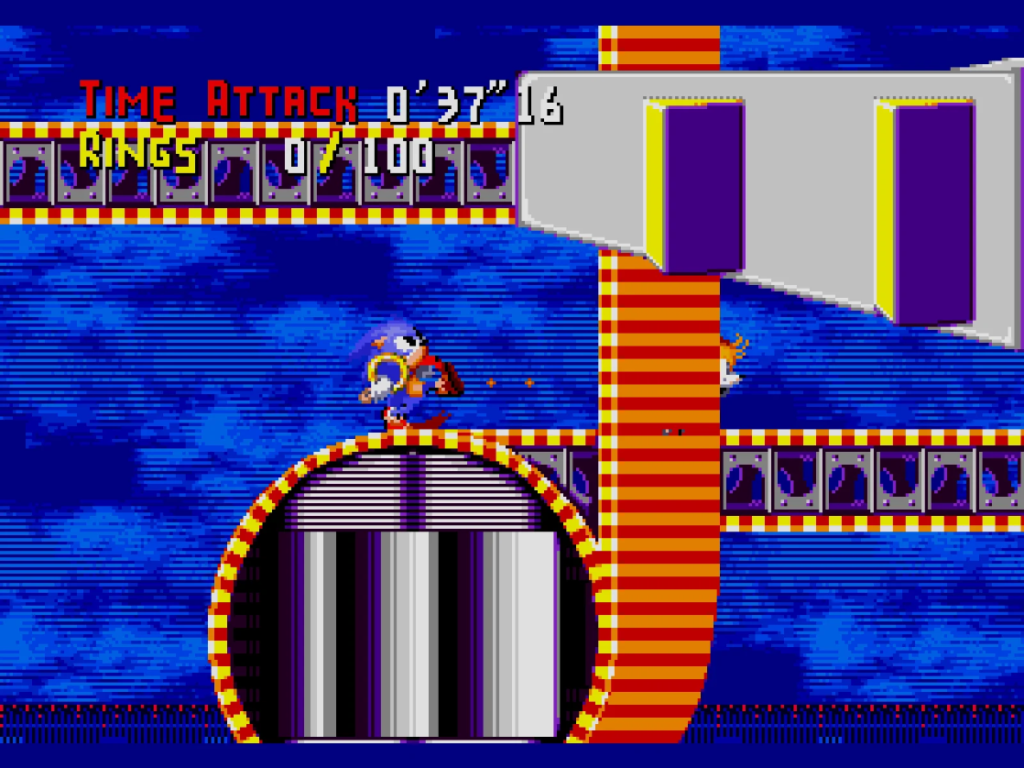
Sonic Crackers
This prototype was circulating online back before there were fully-functional Sega Genesis emulators to play it on. Dating all the way back to as early as 1995, Sonic Crackers is a proof of concept for gameplay mechanics that, alongside several visual and audio elements, eventually found themselves worked into the 1995 Sega 32X game Knuckles Chaotix. You control Sonic and Tails, who run through levels while connected together by rubber-band-like “ring energy” that creates some unique (and uniquely obnoxious) physics. (The name likely comes from “clackers,” a type of toy that consists of two wooden balls at either end of a string, just like how Sonic and Tails are connected in the game.)
Alas, Sonic Crackers is barely a game. There isn’t even a single enemy, just some test levels to zip through. Since Genesis emulation was still in its infancy when the ROM first made its way online, the only way you could play it was if you owned one of those unauthorized add-ons for your Genesis that let you play games off of floppy disks. Since few people did, Crackers went mostly unnoticed for a long time.
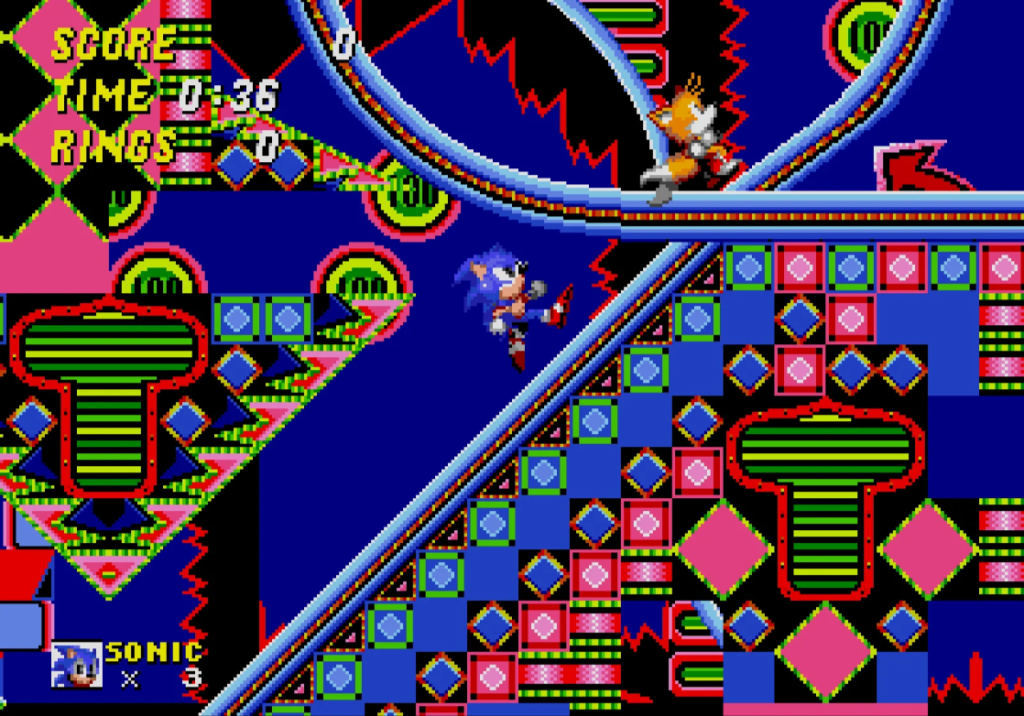
Sonic 2 “Simon Wai” Prototype
Of all of the early Sonic builds that have been preserved, the “Simon Wai” prototype is the most famous. This very early version of Sonic the Hedgehog 2 was chronicled on a late 90s website called Secrets of Sonic the Hedgehog, but all the site had was a set of blurry thumbnail screenshots until 1999, when the ROM was found on a Chinese-language website and shared with the Western Sonic fan community by a fan named Simon Wai.
I’ve written a fair bit about this particular piece of history elsewhere—I actually showed the ROM to its original programmer, Yuji Naka, back in 2005. The main things about this particular prototype that got fans excited were the inclusion of the Hidden Palace Zone, which had been shown in magazine previews but didn’t make it into the final game, and scraps of two other previously-unknown zones: Wood Zone and Genocide City. There’s barely anything in these zones (and Genocide City, true to its name, kills you almost immediately by dropping you into an empty pit), but it was still a fascinating look at what could have been.
For longtime Sonic fans, the release of the Simon Wai prototype was a huge deal. It left us wondering what other classic Sonic stuff existed that we’d never seen before. Communities like S2Beta, now called Sonic Retro, formed to research the games down to the tiniest detail, finding data buried deep in the ROMs and unearthing more ideas that never came to be.
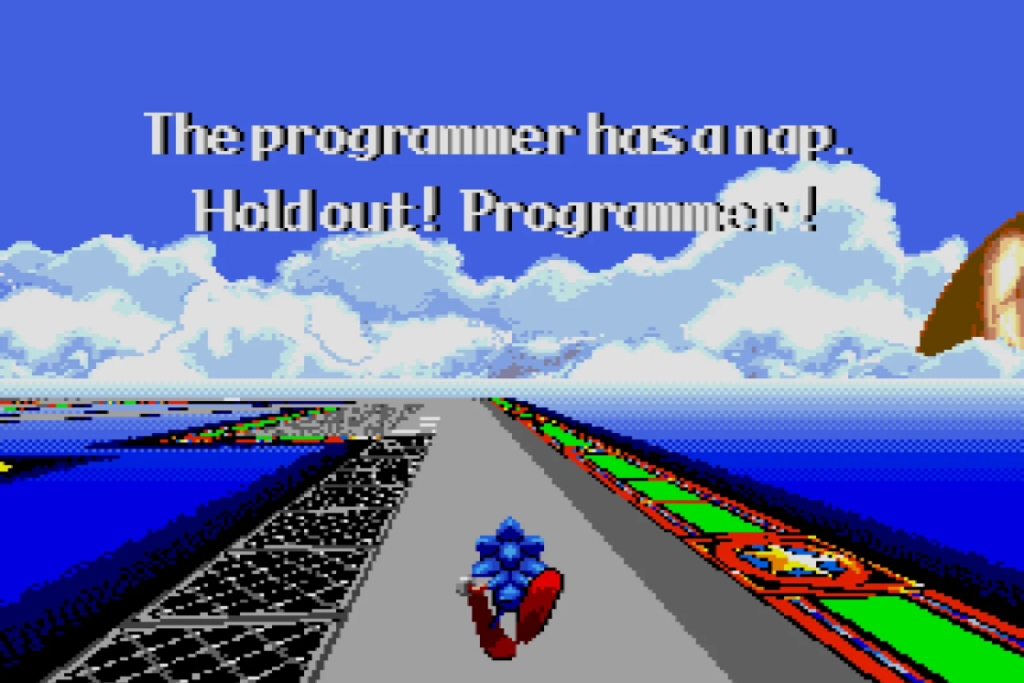
Sonic CD 0510
Sonic CD 0510, named after the May 10, 1993 build date on the CD-R on which it was found, was discovered and distributed online in 2000, not long after the Simon Wai find. The origins of this one are something of a mystery. The initial distribution was handled by a group of fans called Sega Extreme, but the disc itself has vanished into someone’s private collection, hampering efforts to figure out where it came from.
0510 is a snapshot of the Sega CD game Sonic CD smack dab in the middle of its development. Only about half of the stages are fleshed out, and several elements from the final game are either missing or notably different: altered title screen and power-up music, changes to color palettes and enemy designs, and only a simple demo to show off the special stage (above), which includes some meme-worthy text.
The game ends at Zone 3 (Tidal Tempest), but with the use of a debugging menu still present in the ROM, players can visit the rest of Sonic CD’s levels. You might be a bit disappointed if you do venture into the later levels, though. Most of them are extremely bare-bones, featuring skeletal platform placement and almost no objects or enemies to interact with. Zone 2, a planned stage known to have been canned early in Sonic CD’s development (and a subject of intense fan curiosity), is missing at this point, indicating that it was scrapped before this build. There was clearly a ways left to go before Sonic CD was ready for prime time, and it’s fascinating to see just how much got done in the few months before it was released in September of that same year.
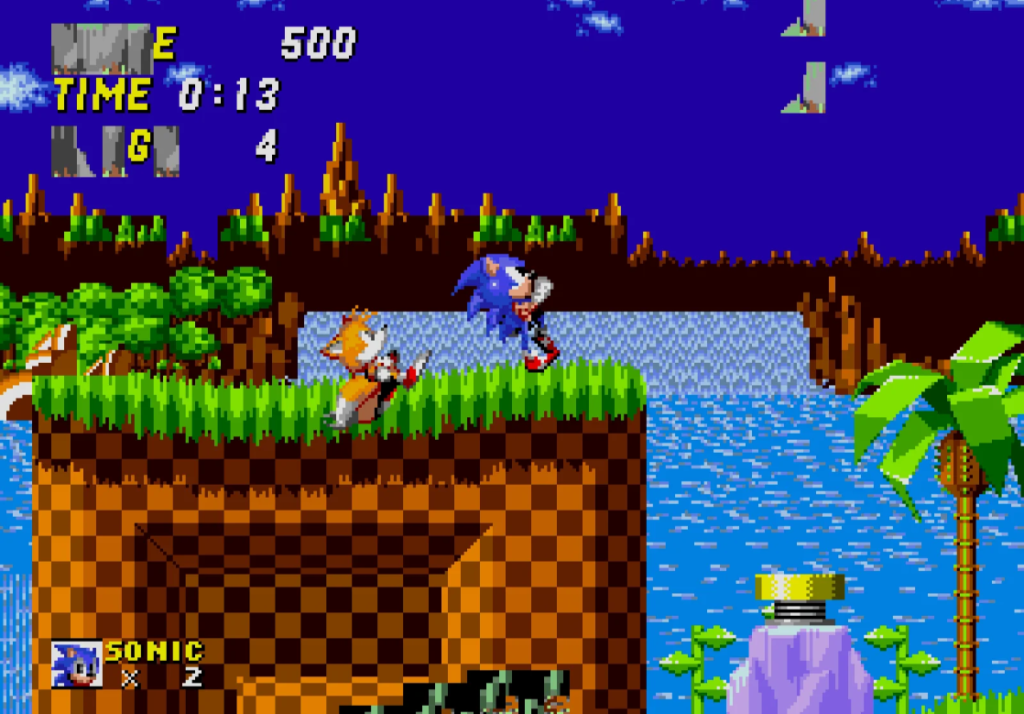
Sonic 2 “Nick Arcade”
If you’re my age, you undoubtedly remember the Nickelodeon game show Nick Arcade. It was a kid’s dreams — a game show centered around video games, where the grand prize was getting transported inside the “Video Zone” (which was, in actuality, a green-screen obstacle course visually enhanced through an Amiga). If you were a preteen and loved games in the early 90s, Nick Arcade was appointment viewing. It was a good place for companies to show off their latest games in motion in the pre-Internet era. Publishers like Konami, SNK, Renovation, and Working Designs used the program as advertising.
When the show proved to be a hit, more companies were keen to jump onboard and give Nickelodeon their games to showcase. Seeing an opportunity to promote their hottest new upcoming title in 1992, Sega gave Nick Arcade a very, very early build of Sonic 2. It was only shown a few times, one of which was during a special show where Melissa Joan Hart and fellow Clarissa Explains it All co-actor Jason Zimbler were competing. It’s very brief, but you can spot (and hear) the differences immediately.
It didn’t go well. Shame nobody knew about the spin dash at the time. Anyhow, you don’t have to have played Sonic 2 all that much to see some big differences between this and the final game. The Nick Arcade build re-used music from Sonic 1, had rough, early animations, a snail-like enemy not seen at all in the final game, and most notably, no Tails!
The Nick Arcade build of Sonic 2 was found in 2006 by a fan named drx, who raised upwards of $1,500 from a community funding effort to obtain it. And boy howdy, is it in a rough state. Besides the issues that could be spotted just from watching the TV show, many of the levels that do exist lack things like enemies and proper object interactions, much like in Sonic CD 0510. Also, Sonic has a vulnerable recoil animation when he hits walls after running at a high speed, which was a terrible idea that the team wisely discarded almost immediately.
That’s not to say Sonic 2 Nick Arcade isn’t extremely interesting, though. Playing this version allows you to see how its developer, Sega Technical Institute, was building on the framework of the original Sonic and trying to make it bigger, faster, and fresher. One particularly fascinating bit is that Sonic 1’s iconic Green Hill Zone is still present and unaltered, presumably as a testing ground. Playing through Green Hill with Sonic 2’s revamped physics, even in this early state, shows just how many under-the-hood changes the game’s engine went through. Just the simple act of running around on the ground feels wildly different.
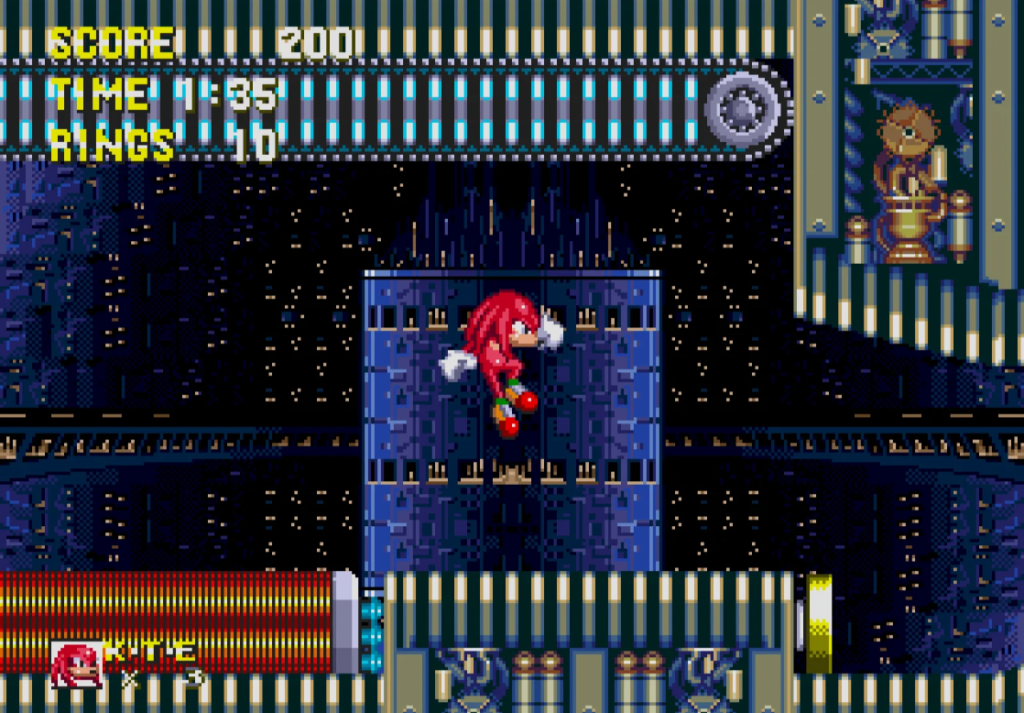
Sonic 3C
The next two games in the Sonic series, Sonic 3 and Sonic & Knuckles, were originally conceived as a single massive game. Under pressure from corporate to release Sonic 3 in February 1994 in the United States, Sega chopped it up into halves. The back half of the game was released later as the “lock-on” cartridge Sonic & Knuckles, into which you could insert your Sonic 3 to get the “full” game. At one point, Sega pondered doing a “special edition” of Sonic 3 in which everything was contained on a single cartridge, but this was scrapped.
There are a few prototype dumps from this period when Sega was mulling over such a release. The most interesting of them is Sonic 3C 0408, which has a lot of the later levels still in a very early state of completion. These ROMs were derived from a series of CD-Rs packed with content downloaded from Sega’s internal QA archives from the mid-90s, and were released alongside early builds of other beloved Genesis games like Dynamite Headdy, Phantasy Star IV, and Ristar.

Sonic CD 0.02
Found as part of an estate sale last year, this is a very, very early build of Sonic CD. This was showcased at a Japanese Sega event called Yuusei Sega World in late 1992, nearly a year before Sonic CD’s release.
When I say that this game is early, I mean extremely early. The only thing on here is a rough and buggy incarnation of Sonic CD’s first stage, Palmtree Panic. You can still time warp to different level variants, but the demo ends after the first boss fight. If you decide to visit the Past, you’ll find that the music is CD-quality Red Book audio, not the chip tunes used in this section in the final game.
Although only one stage is available to play normally, the stage select code from the 0510 build still works… but nothing outside of zone 1 can be chosen. Zone 2 is actually on the list, though, indicating that this comes from a time before that zone got killed off.
Also, the decision to name levels alliteratively seems to have come later, because in Time Attack we see Palmtree Panic named as “SALAD PLAIN.”
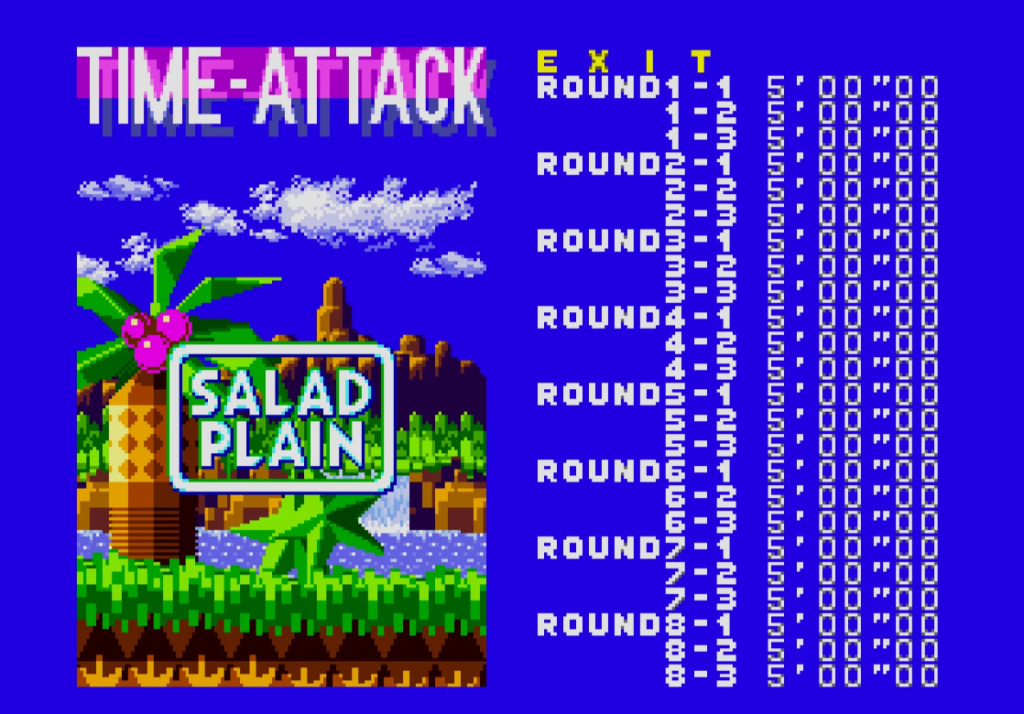
Alongside this build came a few other Sonic CD revisions, including a June 21, 1993 revision with extremely awkward special stages in which you have to hold B to make Sonic run, chasing down weird, bubble-looking UFOs that move in patterns that make no sense whatsoever. Even if you’re not a fan of Sonic CD’s special stages, after playing this, you’ll agree that the final product was a lot better than the original concepts.

Sonic 3 1993-11-03
The most recent Sonic ROM discovery might be the most interesting yet. It’s a build of Sonic the Hedgehog 3 from early November 1993, four months before its official North American release. Since Sonic 3 released in early February 1994, that means there were only months, maybe weeks, between this build and the game going into final production.
After seeing how different this build is from the full release, I have no doubt that the Sonic 3 team worked absurdly hard to make that release date, because in November 1993, this game was rough.
The awkward-looking, washed-out pre-rendered Sonic on the title screen should hint at what to expect here: placeholder sprites for Sonic that look nothing like the final versions, objects that frequently don’t work as intended, points where you can’t progress unless you use debug mode, and completely nonexistent special stages (though you do get a nifty tech demo). But the big thing here is the music: Casino Night, Ice Cap, and Launch Base Zone all have completely different music. (It’s long been speculated that Michael Jackson provided some of the music for Sonic 3; his purported contributions are nowhere to be found in this build. The music in this version matches MIDIs used in the Windows 95 release of Sonic & Knuckles Collection.)
You can see evidence of the developers weighing what to focus on to meet the harsh deadline: Flying Battery Zone, which eventually was shifted to Sonic & Knuckles, is still present in skeletal form here. Tech-savvy fans have also reassembled an early design of Sonic & Knuckles’ Lava Reef Zone from leftover data from the prototype cartridge, indicating that it was in earlier builds but was among the first zones to be cut.
Also, in this version, Sonic has a drop dash. Yes, the drop dash existed almost 25 years before it made its official debut in Sonic Mania.
As amazing as all of these finds have been, there’s a chance there’s still even more early Sonic material yet to be discovered. Classic Sonic fandom is still eager for information about Sonic CD’s lost Zone 2, for example. And there’s been very little in the way of early builds of the very first Sonic the Hedgehog.
Those fires are still being fueled: In April, Sonic CD designer Masato Nishimura tweeted about finding a lost binder full of development materials. A little over a month ago, eagle-eyed researchers scouring YouTube found a rip of a 1991 promotional Japanese VHS tape showing a version of Sonic 1 with some stark differences. Despite how much classic Sonic history has already been preserved, it seems like there’s still more yet to be dug up and analyzed.
Nick Cannon apologizes for anti-semitic comments; will continue as ‘The Masked Singer’ host
Article via ChicagoTribune
Nick Cannon will continue to host Fox’s top-rated reality competition series “The Masked Singer,” the network confirmed on Wednesday. The news that Cannon would stay on “Masked Singer” comes after the host issued an apology online for anti-Semitic comments he made on a podcast.
“When we were made aware of Nick Cannon’s interview with Richard Griffin on YouTube, we immediately began a dialogue with Nick,” the network said in a statement. “He is clear and remorseful that his words were wrong and lacked both understanding and context, and inadvertently promoted hate. This was important for us to observe. Nick has sincerely apologized, and quickly taken steps to educate himself and make amends. On that basis and given a belief that this moment calls for dialogue, we will move forward with Nick and help him advance this important conversation, broadly. Fox condemns all forms of hate directed toward any community and we will combat bigotry of any kind.”
Cannon posted his apology a day after ViacomCBS terminated a long-term relationship it had with the star, which included the long-running sketch comedy series “Nick Cannon’s Wild ‘n Out.” ViacomCBS made the move following an exchange between Cannon and former Public Enemy member Professor Griff on the June 30 episode of Cannon’s podcast “Cannon’s Class.” At one point, Cannon said Black people are the “true Hebrews” and talked about anti-Semitic conspiracy theories involving the Rothschild family.
“It’s never hate speech, you can’t be anti-Semitic when we are the Semitic people,” Cannon said on the podcast. “When we are the same people who they want to be. That’s our birthright. We are the true Hebrews.”
In his apology, posted on Wednesday evening, Cannon said he now felt “ashamed” for those statements; Cannon is said to have been meeting with Jewish leaders in light of the controversy. “First and foremost I extend my deepest and most sincere apologies to my Jewish sisters and brothers for the hurtful and divisive words that came out of my mouth during my interview with Richard Griffin. They reinforced the worst stereotypes of a proud and magnificent people and I feel ashamed of the uninformed and naïve place that these words came from. The video of this interview has since been removed.
“While the Jewish experience encompasses more than 5,000 years and there is so much I have yet to learn, I have had at least a minor history lesson over the past few days and to say that it is eye-opening would be a vast understatement. I want to express my gratitude to the Rabbis, community leaders and institutions who reached out to me to help enlighten me, instead of chastising me. I want to assure my Jewish friends, new and old, that this is only the beginning of my education — I am committed to deeper connections, more profound learning and strengthening the bond between our two cultures today and every day going forward.”
Lionsgate’s Debmar-Mercury hasn’t yet revealed whether its plans had changed regarding its new daytime talk show “Nick Cannon,” set to debut on Monday, Sept. 21, in more than 90% of U.S. local markets. The prolific Cannon is also a producer and appears in E!’s “Celebrity Call Center,” a new reality show that just launched this week. And he continues to host a daily radio show for Meruelo Media’s KPWR-FM (Power 106), which is syndicated nationally.
Cannon is also an executive producer on “Masked Singer,” and has been with the show since its launch in January 2019. “Masked Singer” became a quick hit, and a cornerstone of Fox’s schedule — so much so that the series was given the plum slot behind the Super Bowl earlier this year.
“The Masked Singer” has aired 42 episodes over three seasons so far, with Cannon as host of all of them. He also fronted “The Masked Singer: After the Mask,” an after show that aired on Fox this spring. For his work on “The Masked Singer,” Cannon was nominated for best host at the 2019 MTV Movie & TV Awards, as well as best host for this year’s Kids’ Choice Awards. He was also part of the production team nominated last year for a Producers’ Guild award.
In a social media post early Wednesday, Cannon said he left NBC and “America’s Got Talent” (which he previously hosted) after he says he felt the network “threatened and mistreated me for years,” and that he then “took my talents and executive creativity to my open minded and willing partners at the Fox Television network to create the current #1 hit show on television “The Masked Singer” in which I host and executive produce.”
“The Masked Singer” has been in pre-production, which includes casting and prep work, but it’s not believed to have resumed taping just yet.
Cannon’s career has encompassed acting, stand-up comedy, sketch, music, radio hosting and more — with past credits including “America’s Got Talent.” He told Variety’s Cynthia Littleton earlier this year that he wasn’t looking for another network variety show to host after he ended an eight-season run on “AGT.”
“I was really meticulous about what I would want to host again in the space of nonscripted variety since I had done it on the biggest level with ‘AGT.’ I didn’t want to jump in and host another talent show,” Cannon told her.
Check out some Lovelyti videos:
NBC claims Nick Cannon blindsided them by declaring he isn’t returning to “America’s Got Talent”
Nick Cannon drops TWO Eminem diss tracks~50 Cent picks a side+ #ripnickcanon trends all over twitter
Nick Cannon Gaslights Bl@ck Women In Third Eminem Diss Track #fullbreakdown
‘Magic School Bus’ author Joanna Cole dies at 75
Popular children’s series has sold tens of millions of copies and sparked a popular animated TV series and Netflix series.
Article via NBC
Author Joanna Cole, whose “Magic School Bus” books transported millions of young people on extraordinary and educational adventures, has died aged 75.
Scholastic announced that Cole, a resident of Sioux City, Iowa, died Sunday. The cause was Idiopathic Pulmonary Fibrosis.
“Joanna Cole had the perfect touch for blending science and story,” Scholastic Chairman and CEO Dick Robinson said in a statement Wednesday. “Joanna’s books, packed with equal parts humor and information, made science both easy to understand and fun for the hundreds of millions of children around the world who read her books and watched the award-winning television series.”
The idea for “The Magic School Bus” came in the mid-1980s. Scholastic senior editorial director Craig Walker was receiving frequent requests from teachers for books about science and thought a combination of storytelling and science would catch on. He brought in Cole, whose humorous work such as the children’s book “Cockroaches” he had admired, and illustrator Bruce Degen.
“I think for Joanna the excitement was always in the idea. What? Why? How?” Degen said in a statement. “And with “The Magic School Bus” it was how to explain it so that it is accurate and in a form that a kid can understand and use. And you can actually joke around while you are learning. She had a rare sense of what could be humorous.”
With the ever maddening but inspired Ms. Frizzle leading her students on journeys that explored everything from the solar system to underwater, “Magic School Bus” books have sold tens of millions of copies and were the basis for a popular animated TV series and a Netflix series.
Plans for a live-action movie, with Elizabeth Banks as Ms. Frizzle — who was based on Cole’s middle school science teacher — were announced last month.
After hearing the news of Cole’s death, Banks wrote on Twitter that she was “sending love to Joanna’s family.”
“These books have brought so much joy to children for so many years and I am so honored I get to help shine a light on the legendary Ms. Frizzle,” she said.
A number of young adults also paid tribute to her work on social media.
“I was raised to believe that the earth was six thousand years old,” wrote one Twitter user. “Magic School Bus was my one window on real science, my one hint that maybe that isn’t true.”
Many shared how Cole’s books encouraged an early love of science.
Others wrote how the television series adaptation had helped them feel safe in an often frightening world.
“One last field trip. Thank you for all the adventures years ago,” added voice actor Michael A. Zekas.
Before Scholastic senior editorial director Walker’s death in 2007, he had encouraged Cole and illustrator Degen to explore more “controversial topics” such as climate change, the author told PBS in a 2019 interview. Cole’s final book with Degen, “The Magic School Bus Explores Human Evolution,” is due to be published later this year.
A lifelong fan of science, Cole was a native of Newark, New Jersey, and a graduate of the City College of New York who worked as a children’s librarian and magazine editor before “The Magic School Bus.”
She is survived by her husband Phil; daughter Rachel Cole and her husband, John Helms; grandchildren, Annabelle and William, and her sister Virginia McBride.
A 33-year-old tech CEO was found dismembered in a New York apartment, law enforcement source says
A 33-year-old tech CEO was found dismembered in a luxury New York condo, a law enforcement source told CNN. The New York Police Department confirmed a man had been found dead Tuesday in an apartment in Manhattan’s Lower East Side. The source identified him as tech entrepreneur Fahim Saleh, a venture capitalist and CEO of Gokada, Nigeria’s motorcycle ride-hail company.
Saleh was last seen in surveillance footage Monday evening, getting into the elevator in his apartment building in the Lower East Side of Manhattan, the source said. A man dressed in all black — who, according to police, is suspected to be Saleh’s assailant — is seen in the video entering the elevator with him, according to the official. The elevator in Saleh’s building goes straight into the apartment units there, the source said. Once inside Saleh’s apartment, the alleged assailant started to attack him, the source said.
When the CEO’s sister went to check in on him, she discovered Saleh’s torso in an area next to the living room, the official said.Other parts of his body were stuffed into individual bags in the apartment, the source said. Police haven’t yet determined a motive behind the grisly attack, the source said. The NYPD is looking into how the attacker exited the apartment building.
Saleh’s family confirmed his death in a statement.”The headlines talk about a crime we still cannot fathom,” the statement said. “Fahim is more than what you are reading. He is so much more. His brilliant and innovative mind took everyone who was a part of his world on a journey and he made sure never to leave anyone behind.” “There are no words or actions to provide any of us comfort except the capture of the person who exhibited nothing short of evil upon our loved one.”Gokada called Saleh’s death “sudden and tragic” on Twitter.
“Fahim was a great leader, inspiration and positive light for all of us,” the company wrote. “Our hearts go out to his friends, family and all those feeling the pain and heartbreak we are currently experiencing, here at Gokada. All updates and changes will be communicated with you, as it unfolds. Forever in our hearts.”CNN has reached out to the medical examiner’s office and NYPD for further comment.
As a high schooler, Saleh founded PrankDial.com, a website for prerecorded prank phone calls that, he wrote in 2018, had generated over $10 million since its start. He continued to found and sell sites throughout his teens and his time at Bentley University.Most recently, he founded the venture capital firm Adventure Capital, which invested in ride-sharing start-ups in countries like Bangladesh and Colombia.
On Medium, where he blogged regularly, he called his founding of Gokada “one of the most out there things” he’d ever done. His limited knowledge of Nigeria’s transportation system at first turned off Nigerians he tried to recruit for his start-up. The company raised over $5 million and hired over 800 drivers, but Gokada’s business hit a snag earlier this year when Lagos banned commercial motorcycles in the city. Saleh filmed an impassioned plea on behalf of his employees to lift the ban. In the meantime, the company pivoted to delivery and was working toward launching a boat hailing service, he told CNN in February. “We need and urge the NYPD and other members of law enforcement to work diligently to get to the bottom of this horrific crime and bring justice for Fahim,” his family said.
Article via CNN




